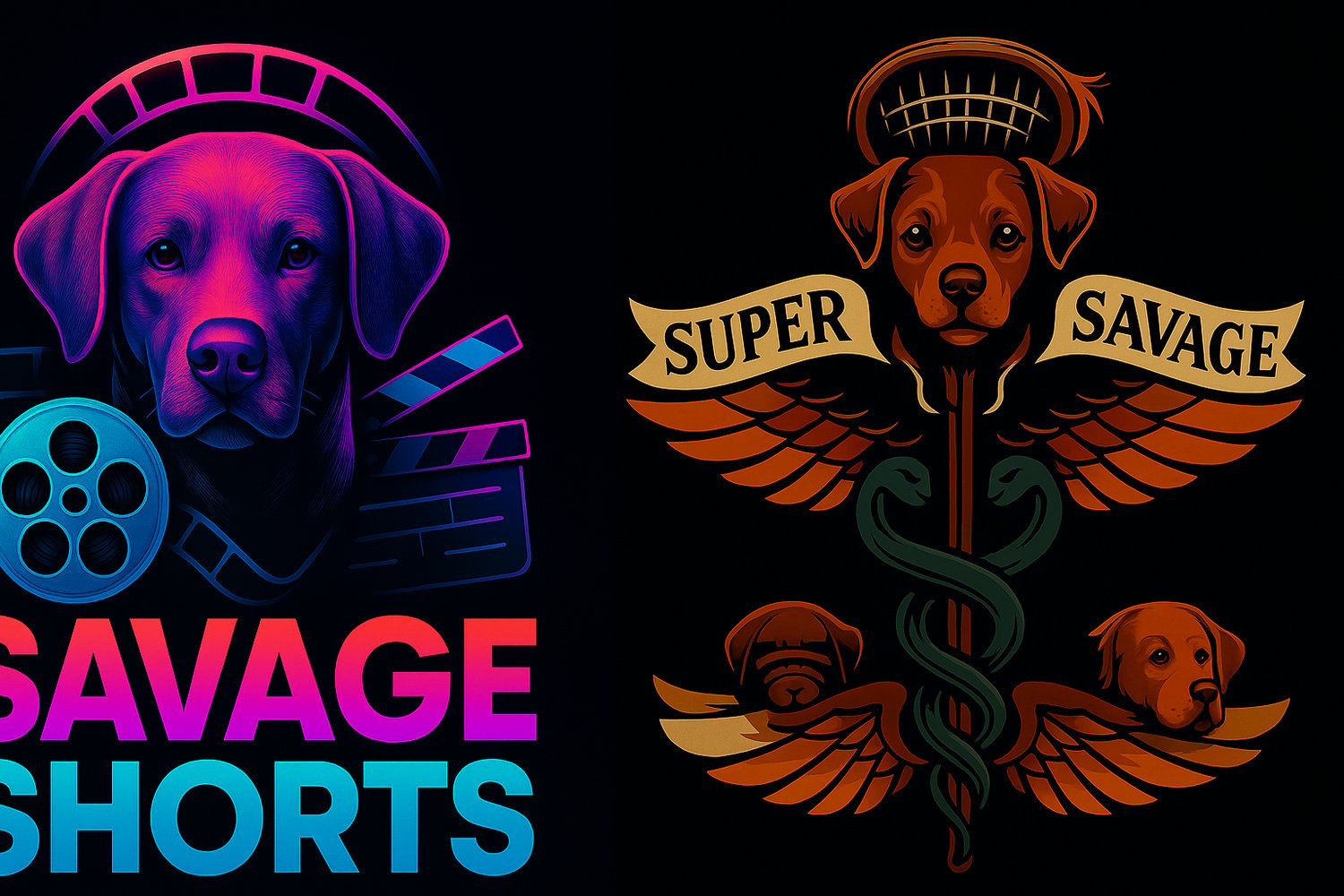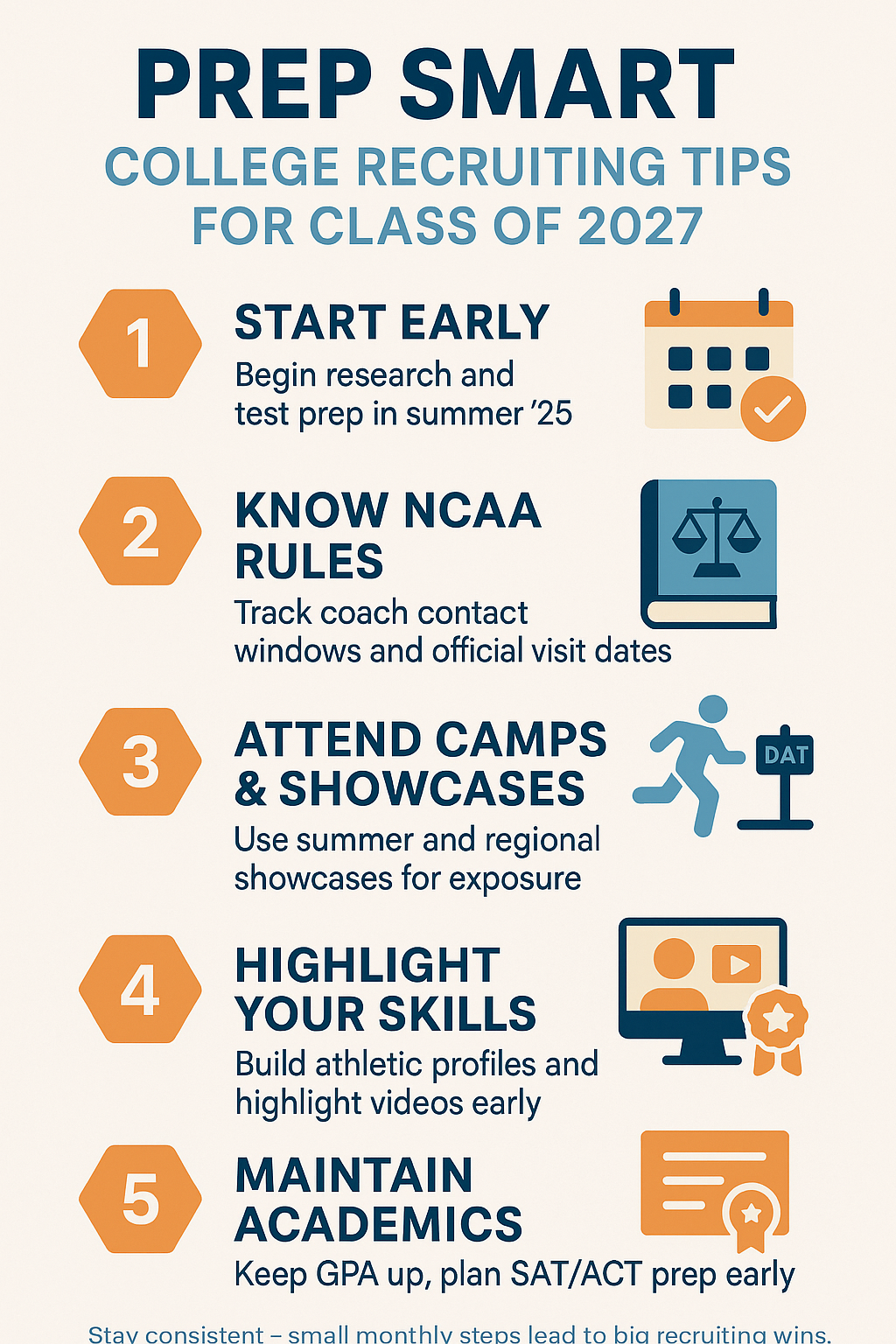If you’re in the Class of 2027 and thinking about playing college sports, now is the perfect time to lay the foundation. You may not be ready to commit or talk to college coaches just yet, but what you do during your first and second years of high school matters.
This is your chance to build your reputation — academically, athletically, and personally — before official recruiting contact starts. Here’s how to get ahead of the competition and prepare for the next level.
⸻
1. Focus on Academics from Day One
The NCAA counts all your core classes starting in 9th grade toward eligibility. A strong GPA now gives you more options later, academically and athletically.
“Many athletes lose scholarship opportunities due to low GPAs from early high school years, even if they improve later” (Andrews & Thompson, 2022).
Aim for a 3.5 GPA or higher to put yourself in a great position.
⸻
2. Start Building a Highlight Video (Even if It’s Short)
You don’t need a whole recruiting film yet — but you can start saving game clips, big plays, and training footage now. By the end of your sophomore year, you’ll want a solid highlight reel.
“Athletes who begin filming early can show growth over time, which is valuable to college coaches” (Lopez, 2023).
Pro tip: Use Hudl, your phone, or apps like Sporfie or Pixellot to collect clips now for later editing.
⸻
3. Use Social Media to Showcase Your Growth
Start building your athletic brand on platforms like Instagram or Twitter (formerly known as X). Post clips of your workouts, games, and accomplishments — and show your character through sportsmanship and leadership.
“Student-athletes with consistent, positive content are 40% more likely to be followed by college coaches before junior year” (Simmons, 2024).
Be mindful: what you post reflects your reputation. Stay clean, stay humble, and remain coachable online.
⸻
4. Attend Camps for Skill — Not Just Exposure
In 9th and 10th grade, the best camps are ones that teach, not just ones that promise scholarships. Use this time to refine your technique, receive intense coaching, and compete against top talent.
“Freshmen and sophomores benefit most from development-focused camps versus high-pressure recruiting events” (Reid, 2023).
You’ll be better prepared for exposure events in junior year.
⸻
5. Learn the Recruiting Rules & Timeline
For most sports, college coaches can’t directly contact you until June 15 after your sophomore year (NCAA, 2024). But that doesn’t mean you can’t:
• Research programs
• Attend college camps
• Follow coaches on social media
• Build your profile
“Understanding the recruiting timeline helps athletes and families avoid stress and wasted energy in early years” (Miller, 2023).
Stay focused on development now — the exposure will come later.
⸻
6. Build a Simple Player Profile or Google Folder
Even as a sophomore, you should have a basic recruiting folder with:
• Name, sport, grad year, school
• GPA, height/weight, contact info
• Clips or links
• Academic goals and honors
“Organized athletes stand out to coaches, even before official contact begins” (Grant, 2024).
When you’re ready to start emailing schools (in junior year), you’ll have everything prepped.
⸻
7. Build a Strong Relationship With Your Coaches
Your high school and club coaches are your biggest advocates. Please let them know your goals and be open to coaching. Coaches talk — and first impressions can spread far.
“College coaches often trust local high school or club coaches more than any online profile” (Nguyen, 2022).
Could you ask your coaches for honest feedback and be willing to put in the work to improve?
⸻
Final Advice: Don’t Rush — Build Right
Recruiting for the Class of 2027 will heat up in your junior year, but everything you’re doing now sets the tone. Focus on character, growth, and consistency. Stay humble and hungry — and enjoy the process of getting better every day.
⸻
References
• Andrews, L., & Thompson, B. (2022). Early academic decisions and their impact on athletic eligibility. College Readiness Review, 7(1), 12–16.
• Grant, R. (2024). The impact of an organization's early efforts on long-term recruiting success. Prep Athletics Quarterly, 9(3), 28–32.
• Lopez, R. (2023). Video strategies for underclassmen athletes. Highlight Trends Magazine, 6(2), 14–19.
• Miller, D. (2023). The Recruiting Timeline Decoded: Freshman and Sophomore Years. NextGen Athlete Journal, 8(4), 23–26.
• NCAA. (2024). Recruiting Calendars by Sport: Contact Periods and Guidelines. Retrieved from www.ncaa.org/recruiting.
• Nguyen, H. (2022). The value of coach referrals in early recruiting. Youth Sports Connections, 5(3), 21–24.
• Reid, A. (2023). Maximizing camp experiences for younger athletes. Development First, 11(1), 18–22.
• Simmons, T. (2024). The rise of social scouting: How coaches use athlete profiles. Digital Athlete Insight, 10(1), 14–17.



Comments ()